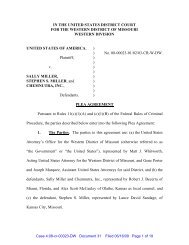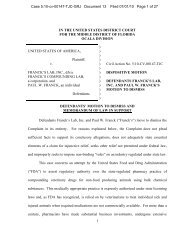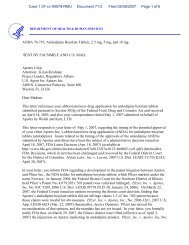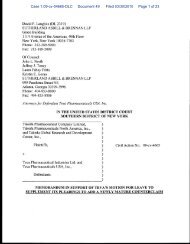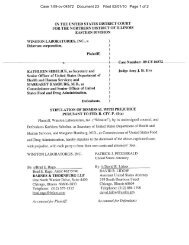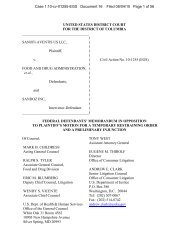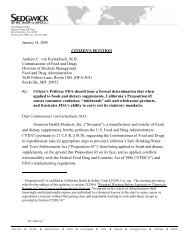first edition (1980) of the Orange Book - FDA Law Blog
first edition (1980) of the Orange Book - FDA Law Blog
first edition (1980) of the Orange Book - FDA Law Blog
Create successful ePaper yourself
Turn your PDF publications into a flip-book with our unique Google optimized e-Paper software.
6. Patent status <strong>of</strong> drug products not considered.The patent laws have no bearing 00 <strong>the</strong> enforcement <strong>of</strong> <strong>the</strong> Federal Food,Dr ug, and Cosnetic Act, and <strong>the</strong> agency does not consider <strong>the</strong>se laws whenreviewing new drug awlicatioos and making drug product awroval decisions.Thus, if a firm subni ts a drug application for a drug that is patented, <strong>FDA</strong>reviews <strong>the</strong> awlicatioo without oonsidering <strong>the</strong> patent issue. If <strong>the</strong>awlication is approvable, <strong>the</strong> existence <strong>of</strong> a patent would not affect <strong>the</strong>agency's decisioo Do grant awroval for marketing.F. CODES AND SPECIFIC OOLICIES FDR THERAPEIJ'l'IC EYJU:rvAI.EN:E EVALUATIONSThe coding system is ronstructed Do allCM users to determine quicklywhe<strong>the</strong>r <strong>the</strong> agency has evaluated a particular approved product as <strong>the</strong>rapeuticallyequivalent to o<strong>the</strong>r pharmaceutically equivalent products. Thecoding system is also intended Do provide specific information on <strong>the</strong> basisfor <strong>FDA</strong>'s evaluatioos.There are ~ classification categories into whichall <strong>of</strong> <strong>the</strong> multisource drugs have been placed, as follows:A - Drug products that <strong>FDA</strong> considers Do be <strong>the</strong>rapeutically equivalentbo o<strong>the</strong>r pharmaceutically equivalent products.B - Drug products that <strong>FDA</strong> does not at this time oonsider to be <strong>the</strong>rapeuticallyequivalent Do o<strong>the</strong>r pharmaceutically equivalent products.A two-letter code is used in <strong>the</strong> List. The <strong>first</strong> letter is <strong>the</strong> basicclassification ("A" or "B") Do which an individual drug product has beenassigned. The second letter in <strong>the</strong> code designates a more specific reasonfor placing <strong>the</strong> individual product in that category. The· codes areexplained in this section <strong>of</strong> <strong>the</strong> Preface. Indi vidual drug products havebeen evaluated as <strong>the</strong>rapeutically equivalent in accordance with <strong>the</strong> definitionsand policies outlined below.A - Drug products that are considered to be <strong>the</strong>rapeutically equivalentto o<strong>the</strong>r pharmaceutically equivalent products.Drug products designated with an "A" code fall under one <strong>of</strong> twomain policies: (1) For those active ingredients for which no bioequivalenceissue is known or suspected, <strong>the</strong> <strong>the</strong>rapeutic equivalence <strong>of</strong>pharmaceutically equivalent products is presumed, so loog as <strong>the</strong>products are manufactured in accordance with Current Good ManufacturingPractice regulations and meet <strong>the</strong> o<strong>the</strong>r requirements <strong>of</strong> <strong>the</strong>ir approvedawlications: (2) For those drug products rontaining active ingredientswhich have been identified by <strong>FDA</strong> as having actual or potentialbioequivalence problems (21 CFR 320.22 or 42 FR 1648, January 7, 1977),I - 9\



